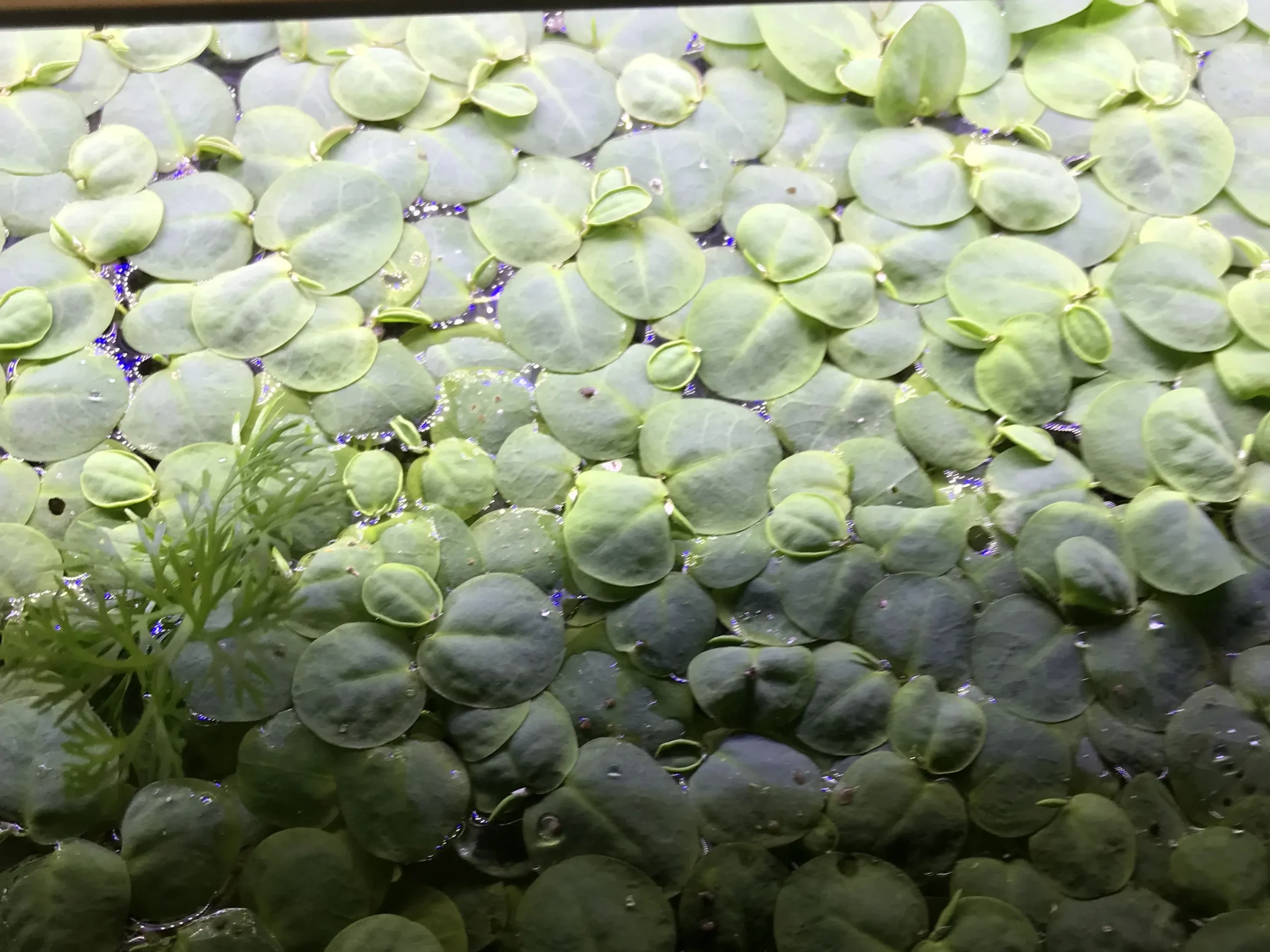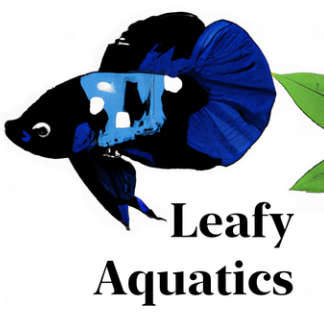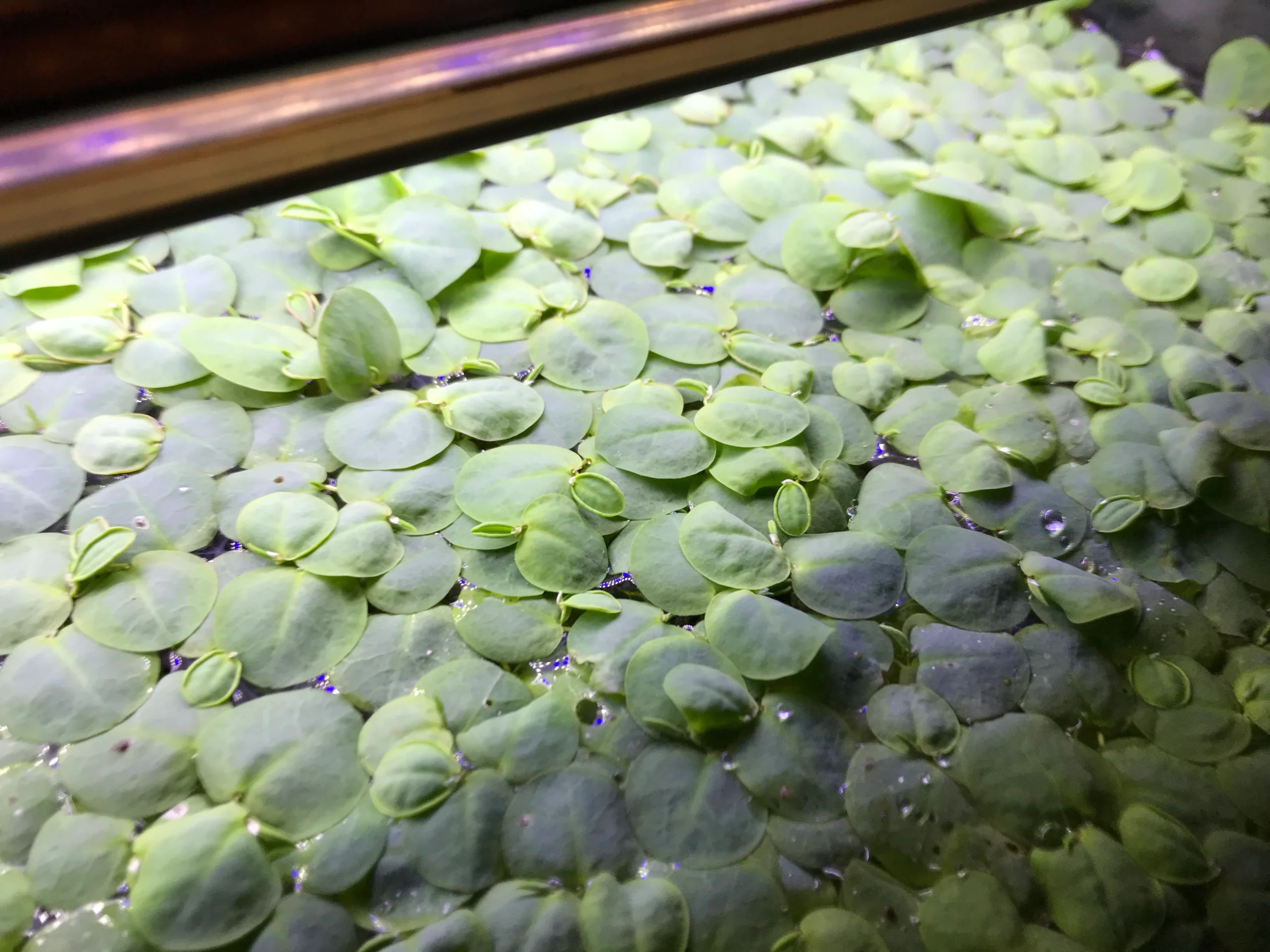Comprehensive Guide to Red Root Floater Care
Floating plants are one of the great wonders of planted freshwater aquariums. With that being said, advanced hobbyists and local fish shops will tell you they are not all the same in terms of benefits and beauty. The red root floater stands out as one of the most beloved floating plants in the hobby for their bright red roots, compact floating pads, and natural shading effect.
With the right conditions and proper care red root floaters grow very quickly and can transform the look of a tank. This guide covers how to help them thrive, how to avoid common issues, and what fish enjoy them the most.
Red Rood Floater Quick Facts
Max Size: Leaves up to 1 inch (2.5 cm) wide, with roots reaching up to 3 inches (7.5 cm) long
Ease of Care: Intermediate
Temperature: 72–82°F (22–28°C)
pH: 6.0–7.5
Light Requirement: Moderate to high light, about 6–10 hours per day for best color and growth
Fertilizer Requirement: Medium to high; benefits from regular liquid fertilization, especially with iron for red coloration
Origin: South America (Amazon Basin region)
What Are Red Root Floaters
Red root floaters (Phyllanthus fluitans) are South American floating plants commonly used in both low tech and high tech aquariums. They have small round leaves that can turn red under strong lighting and nutrient rich water. Their long red roots hang beneath the surface and offer natural cover for fish and shrimp.
These plants are often compared to frogbit and duckweed, but they are easier to manage and do not spread as aggressively when conditions are controlled.
Ideal Conditions For Red Root Floaters

Light Requirements
Red root floaters grow best under moderate to high light. More light leads to deeper red coloration in both the leaves and roots. However, excessively strong light without enough nutrients can cause bleaching or melting.
For ideal red root floater lighting, aim for:
– 6 to 10 hours of light per day
– Full spectrum LEDs
– Surface agitation kept low so the leaves do not flip or submerge
Consistent lighting helps them form compact growth and rich color. Dim lighting encourages green leaves and slower growth.
Water Parameters
These floaters adapt well but will thrive when the parameters stay stable. Ideal conditions include:
Temperature: 72 to 82 F
pH: 6.0 to 7.5
GH: 3 to 12
KH: 1 to 6
Soft to moderately hard water is preferred. They do not perform well in very hard water where nutrient uptake becomes more difficult.
Flow And Surface Movement
Red root floaters prefer calm water. Avoid strong surface agitation or aggressive filtration that disturbs the surface. Excess movement prevents the leaves from sitting flat and can cause constant flipping which damages new growth.
If you run a powerful filter, position the outflow below the surface or use a spray bar.
Fertilizers And Nutrient Balance
Red root floaters are heavy feeders. They grow much faster with regular fertilization.
For optimal conditions, use a fertilizer mix including:
– Nitrate
– Phosphate
– Potassium
– Iron
– Micronutrients
Liquid fertilizers work best because the plant absorbs nutrients through the water column. Iron is especially important for red coloration. Tanks with CO2 injection will see faster growth, but CO2 is not required.
Aim for stable nutrient levels across the week. Large swings may cause melting or stunted roots.
Humidity Considerations
If your tank is open top, keep the surrounding room air from being too dry. These floaters prefer humid air above the surface. Strong airflow from fans or dry winter conditions can cause edges of the leaves to brown.
How To Make Red Root Floaters Thrive

Thin Them Regularly
Overcrowding blocks light to the lower pads and leads to yellowing. Remove a handful each week to maintain healthy growth. Thinning also helps keep nutrients stable.
Keep The Surface Clean
Protein films or oils reduce oxygen exchange at the surface and block light penetration. Use a paper towel to skim the film or direct a gentle flow to the surface for a few minutes each day.
Control Competition From Faster Floaters
Avoid mixing red root floaters with duckweed or water lettuce. These species outcompete them and can cause stunting or complete die off.
LeafyAquatics Tip: you will usually get some duckweed mixed in when purchasing red root floater, whether online or at a store. We’d recommend to quarantine red root floater if possible. Additionally, inspect the plants thoroughly underneath the leaves and within the roots to look for duckweed hitch hikers.
Maintain Consistent Water Changes
Weekly or at max biweekly water changes help replenish important trace minerals. Red root floater responds best to clean, nutrient balanced water.
Offer Adequate Iron
In tanks with bright lighting, low iron is the most common reason for pale roots. A small weekly iron supplement can restore the red color within days.
Common Red Root Floater Issues And How To Fix Them

Melting Leaves
Melting happens when floaters are introduced to a new tank with different water parameters. It can also occur from sudden exposure to high light or fluctuating nutrients.
Solutions:
– Acclimate slowly
– Reduce lighting for the first few days
– Maintain stable fertilizer dosing
Roots Turning Brown Or Short
This usually signals nutrient deficiency or too much surface movement.
Fix by:
– Adding more iron
– Reducing flow
– Increasing general fertilizer dosing
Pale Or Green Leaves Instead Of Red
This occurs with low lighting or low iron.
Improve by:
– Maintaining consistent macronutrient levels
– Increasing light intensity
– Increasing iron
Leaves Curling Upward
Often caused by dry air above the tank or strong fans.
Improve humidity or reduce evaporation driven airflow.
Best Tank Mates For Red Root Floaters
Many fish species appreciate the cover and dimming effect provided by a floating plant layer. Red root floaters are especially favored in tanks with:
Betta Fish
Bettas enjoy shaded areas and feel secure with cover near the surface. Floaters create natural resting spots and mimic the calm shallow waters they prefer.
Male bettas will often create bubble nests in the leaves of red root floaters, a common mating behavior.
Apistogramma And Other Dwarf Cichlids
These species enjoy softer lighting and benefit from the additional biofilm that forms on the roots.
Livebearers
Guppies, platies, and endlers enjoy darting through the roots. Fry use the roots as natural hiding spaces.
Rasboras And Tetras
Many small schooling fish show richer colors under softer lighting conditions created by floaters. Harlequin rasbora and ember tetras are both perfect completments to the red root floater due to their red hues.
Shrimp And Nano Species
Red cherry shrimp, Amanos, and other small invertebrates graze on the microfilm that grows on the roots. Floaters can increase survival rates for baby shrimp.
Red Root Floater Propagation
Red root floaters propagate through daughter plants. Healthy floaters send off small side shoots that detach and spread naturally. You can also separate clusters manually and move them to different areas of the tank.
Healthy conditions lead to rapid propagation and thick surface coverage.
Final Tips For Red Root Floater Success
- Keep flow gentle
- Dose iron regularly
- Maintain stable nutrients
- Trim crowded mats
- Provide moderate to high lighting
- Avoid mixing with aggressive competing floaters
With consistent care and the right balance of light and nutrients, red root floaters will reward you with vibrant color, long red roots, and steady growth. They enhance the look of planted tanks and improve the natural behavior of many fish species.

